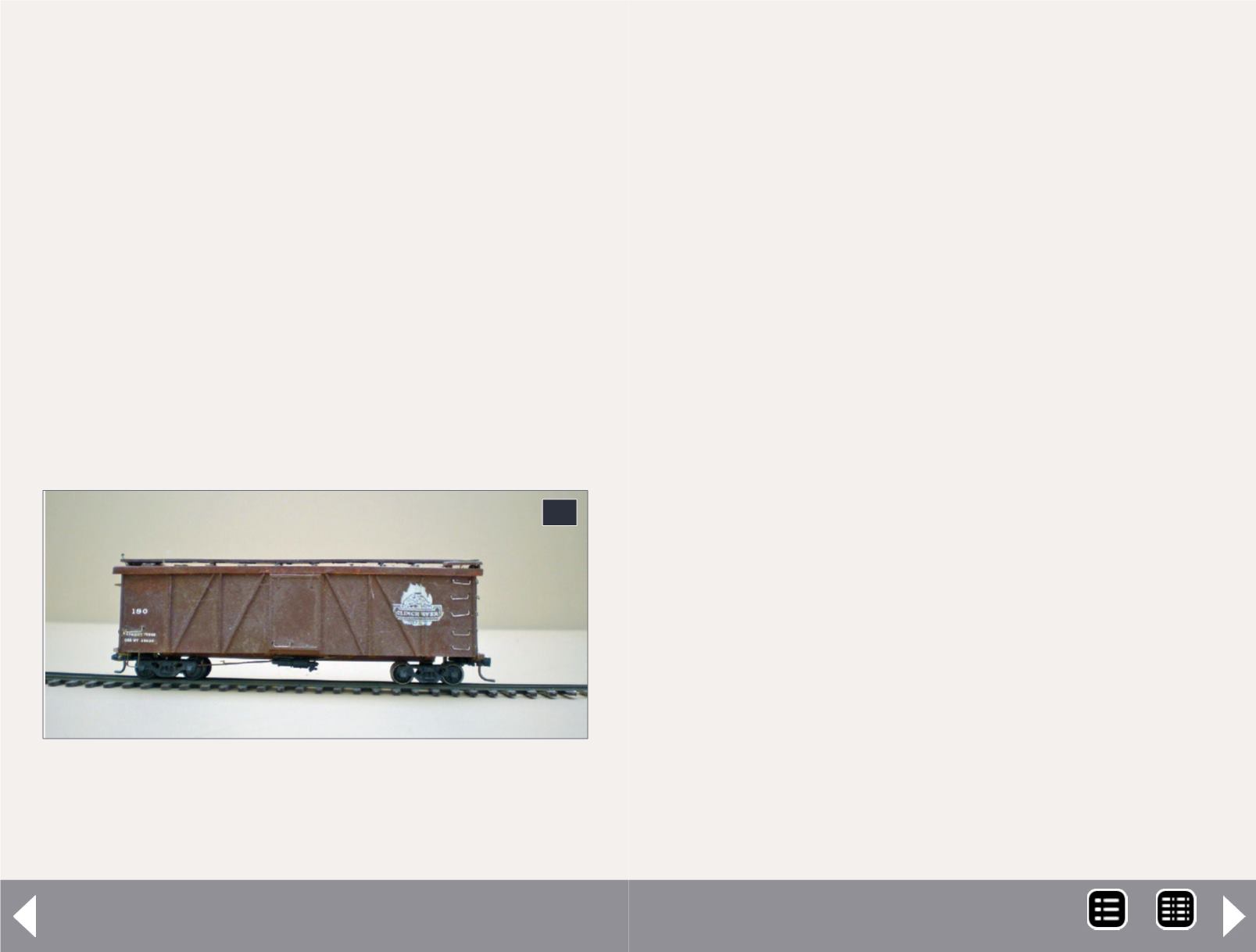
The Lite and Narrow Column - 10
16
16: An early Funaro and Camerlengo steel East Broad
Top steel boxcar with the Clinch River herald. I letter
the cars for my railroad but they are numbered for the
prototype.
built-up bolster, the Hoffman Simplex trucks were used for
the car.
Scratchbuilding boxcars
In the process of developing my Tweetsie fleet of boxcars, I dis-
covered two unique cars. They are cars 430 and 443, one of each
size car. What makes them unique is that they are covered in
galvanized metal that Tweetsie applied to them on the sides and
ends. For years there has been a discussion about the metal used
on these cars, and many thought that it might be aluminum.
Recent research on the cost of aluminum at the time of this con-
version suggests otherwise.
The methods I am using to build these and other freight cars can
be used in any scale. So if you have a unique car that you want to
build, or there are none produced for your favorite railroad, then
feel free to try them.
I prefer to work on flat surfaces for my car construction. This is
because I have made masters in the past for cars that weren’t
available at the time. For these cars, I used Evergreen freight car
siding, reversed for the metal cars.
Using drawings from “Along the ET&WNC,” I cut both sides to
length and height. I took the measurements from the data in
the drawing and cut the fascia from scale 1” x 3” wood. This
was glued into place using CA. The door was cut from sty-
rene and positioned according to the drawings. I made the
ladder uprights from 2” x 3” wood and glued them into posi-
tion with CA.
Tichy has made boxcar building an easy chore with their hard-
ware releases. Part number 3070 provides all that you need to
build several cars, with the door hangers and stops and locks.
They have also introduced roofwalk supports since I built the gal-
vanized cars, making that job much easier.
With the car sides and ends completed, I constructed a jig for
the underframe. I used the drawings to get the correct spacing
and used the correct size of wood to glue the spacers into place.
These were glued to a sheet of .040” styrene and were made
short enough to use with various lengths of cars. I cut the wood
for the frame to length and squared them before attaching the
end sills. After the glue had dried, I removed the underframe
from the jig and glued scale 2” x 8” boards to the floor.
I glued the sides and ends into place, bracing them with scrap
styrene strips. The roof is cut from Evergreen freight car siding
and reversed to show the smooth side. Panels were scribed in
the roofing to represent the tin roof on the cars. For the roof
support, .080” styrene was run down the middle of the car. A
better solution is to make roof supports in the same shape as
MRH-Feb 2014


